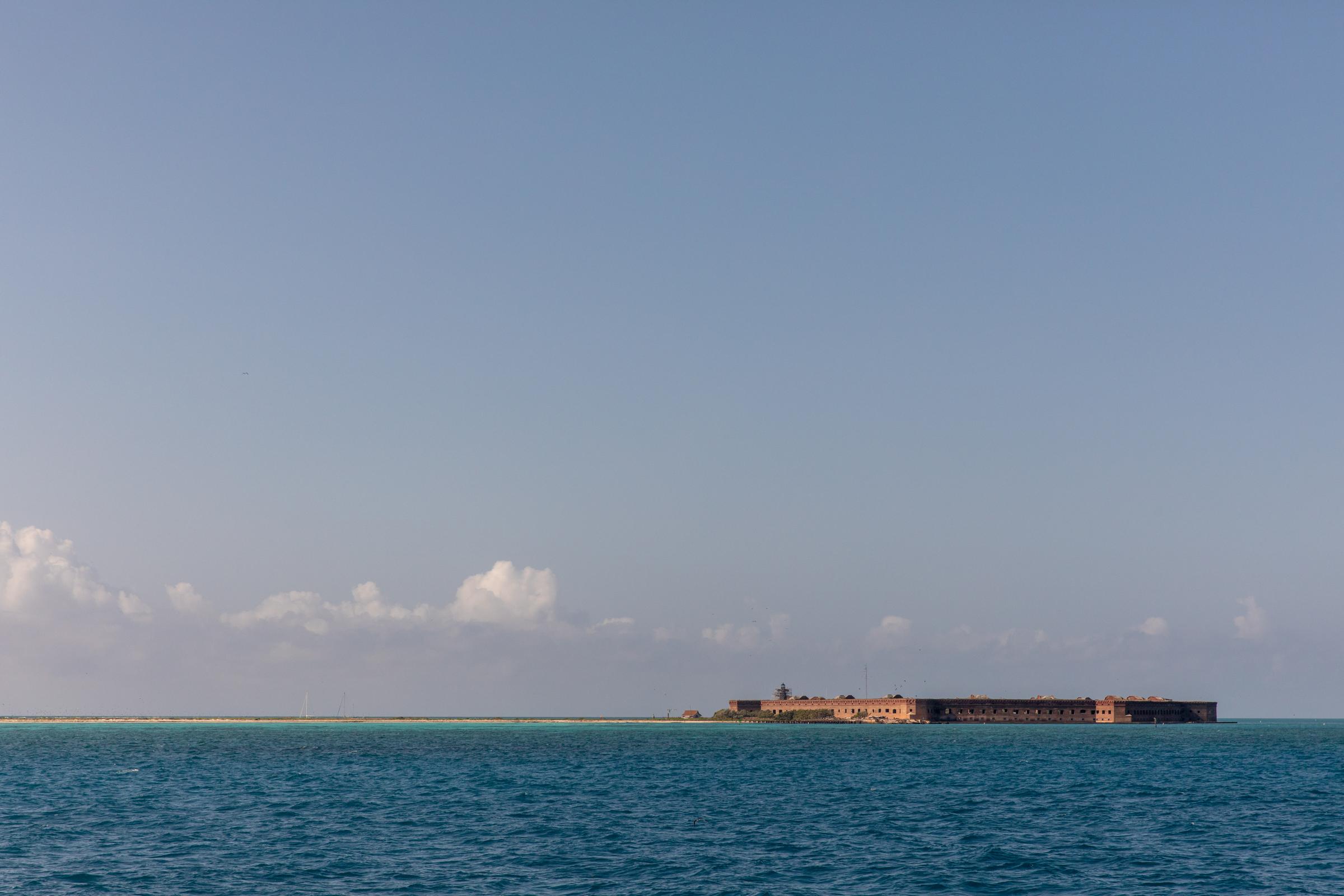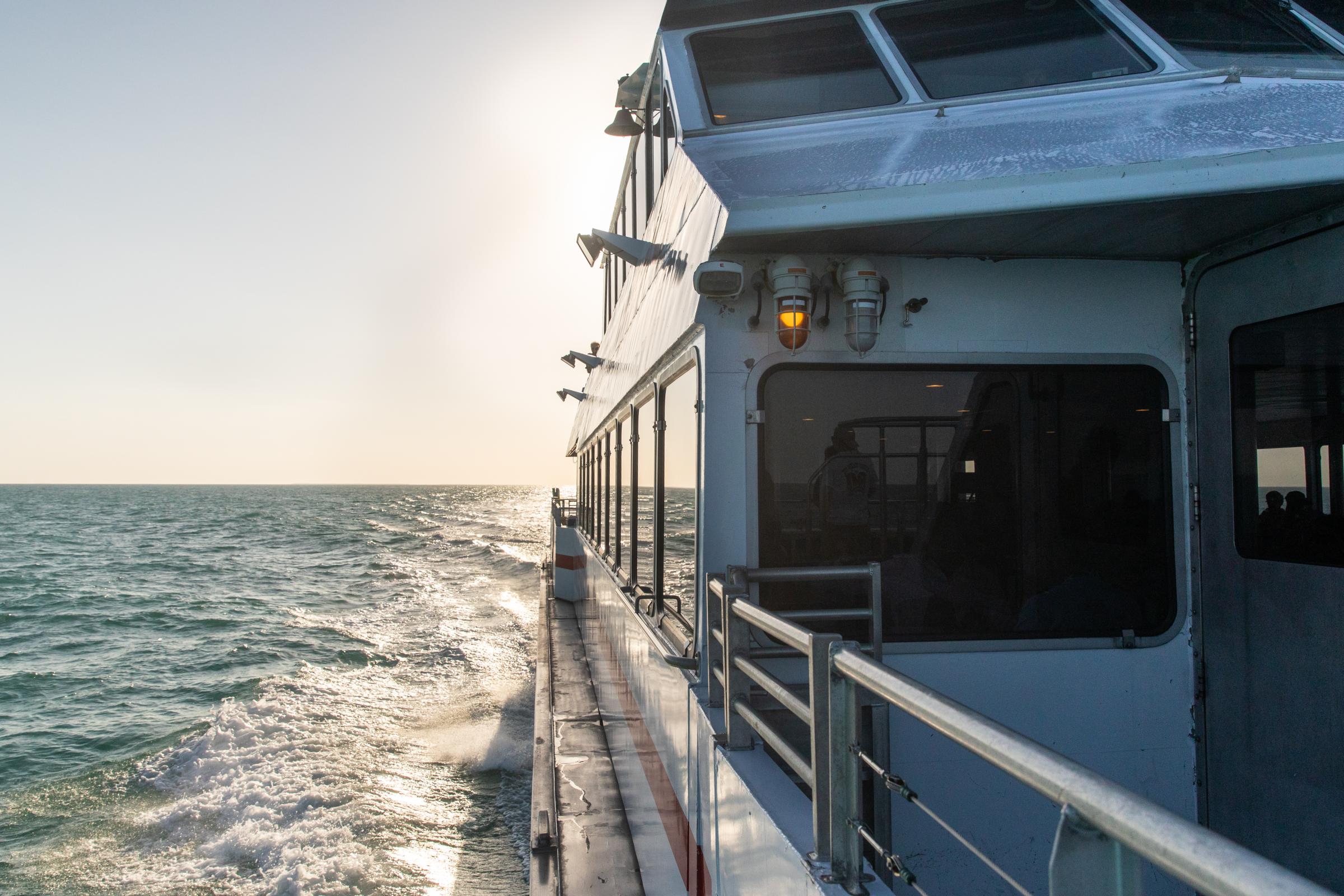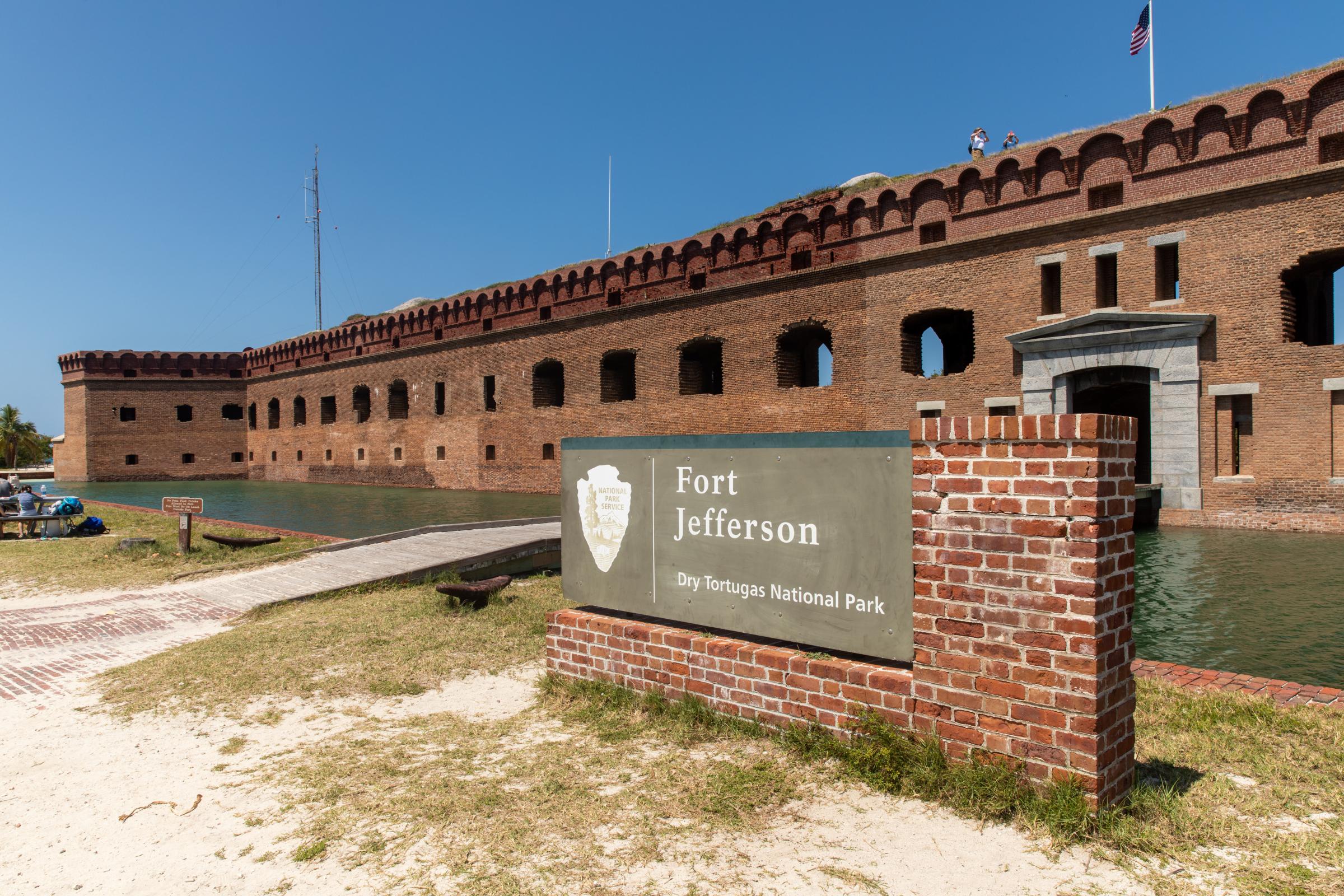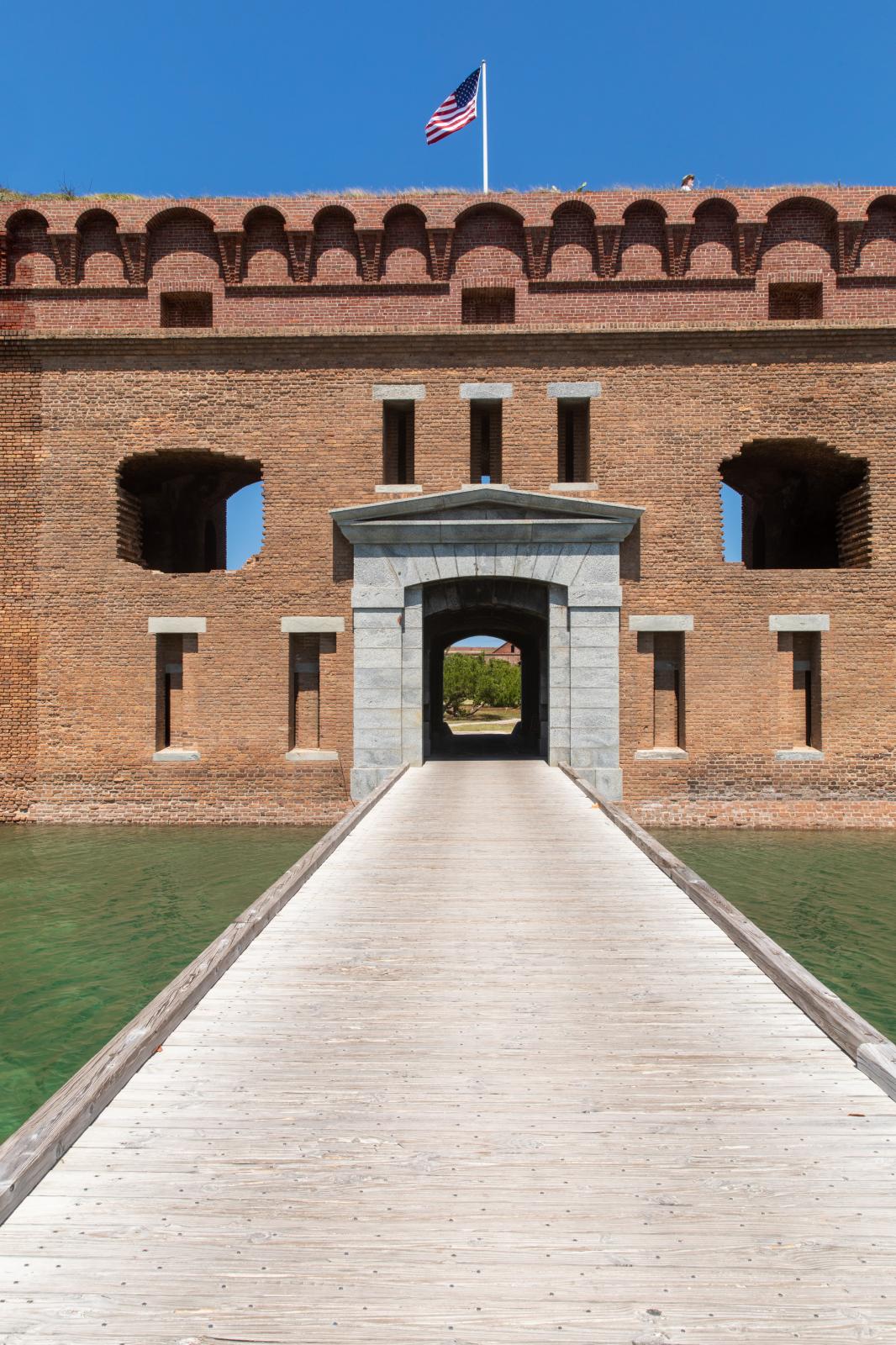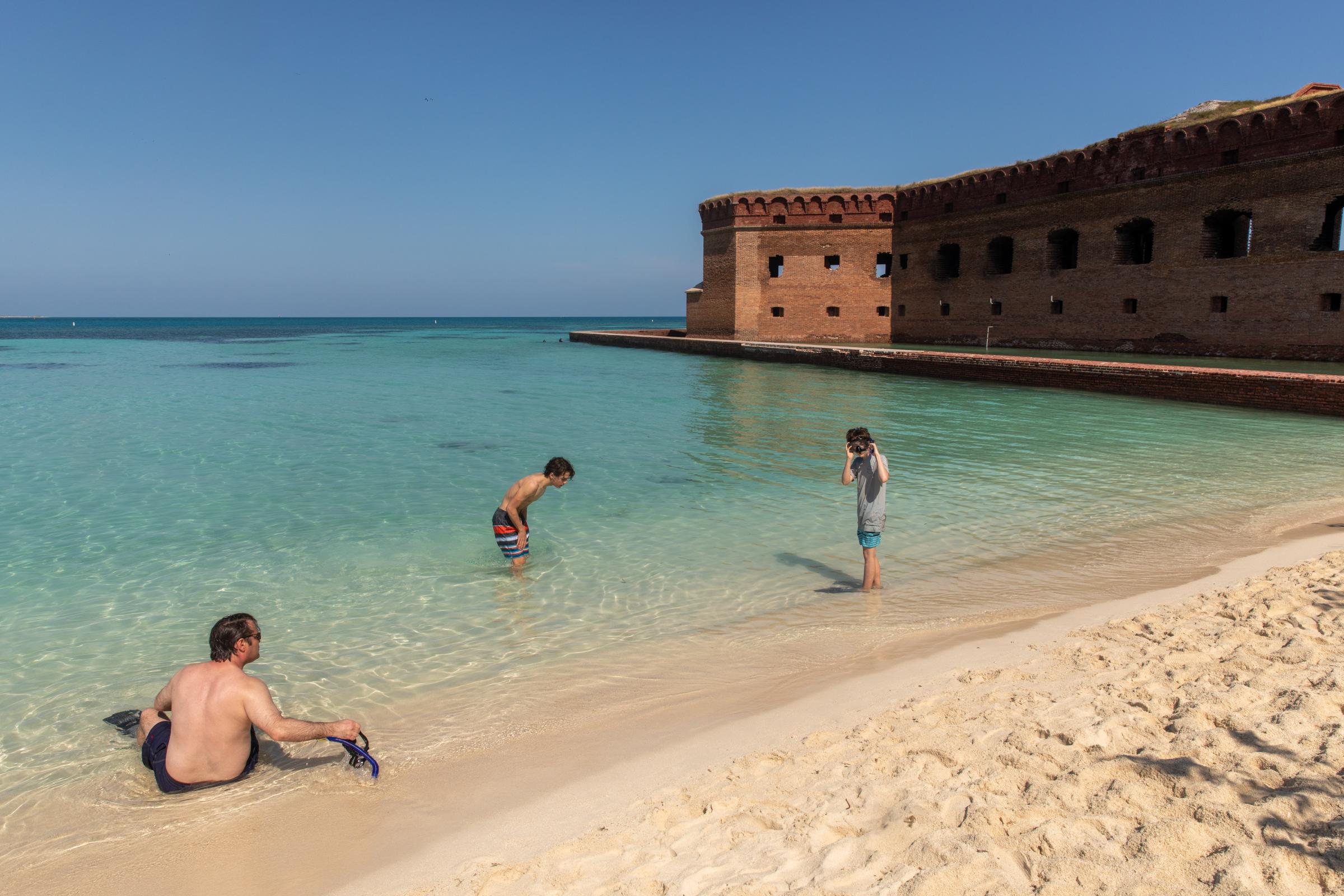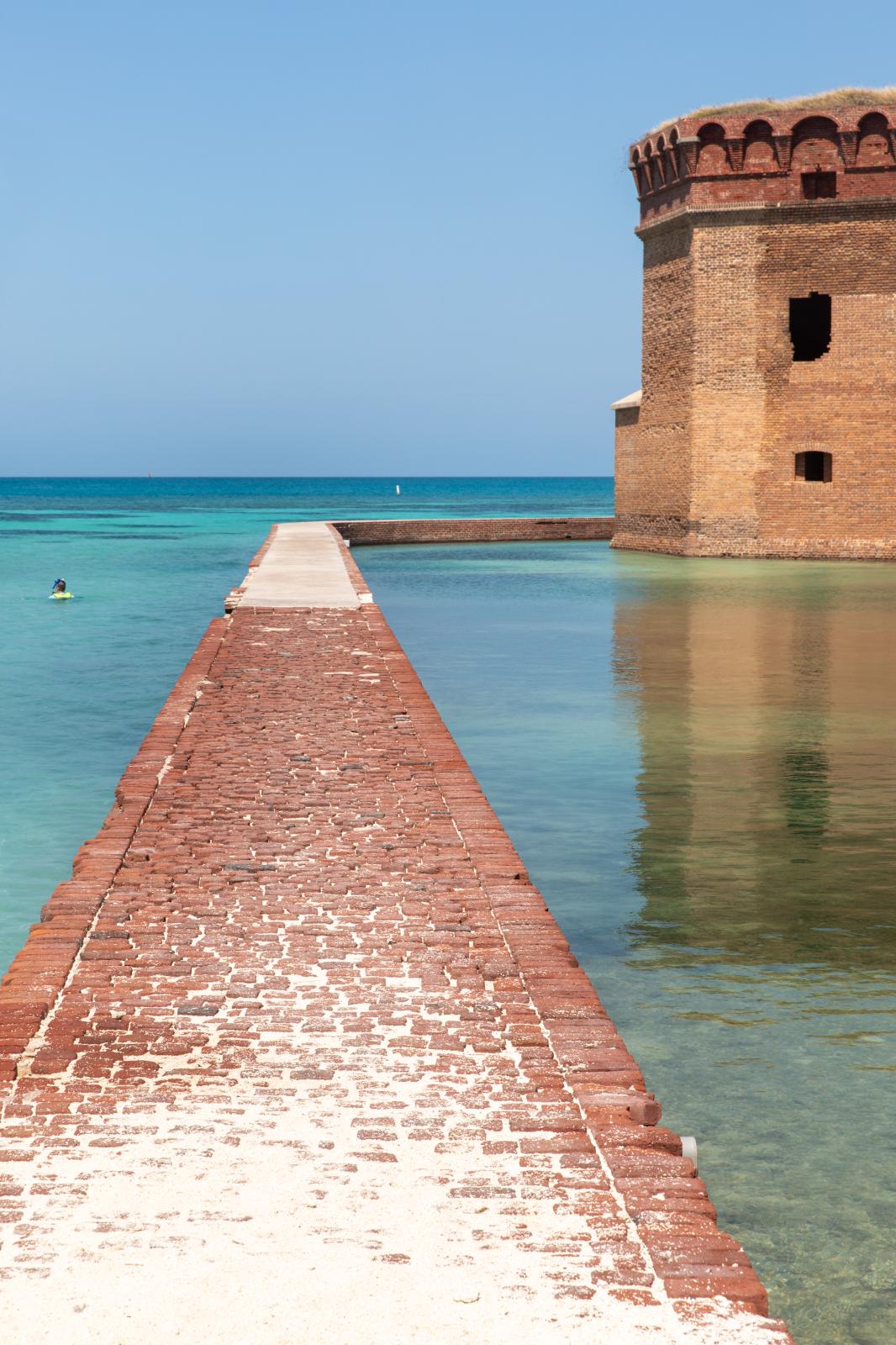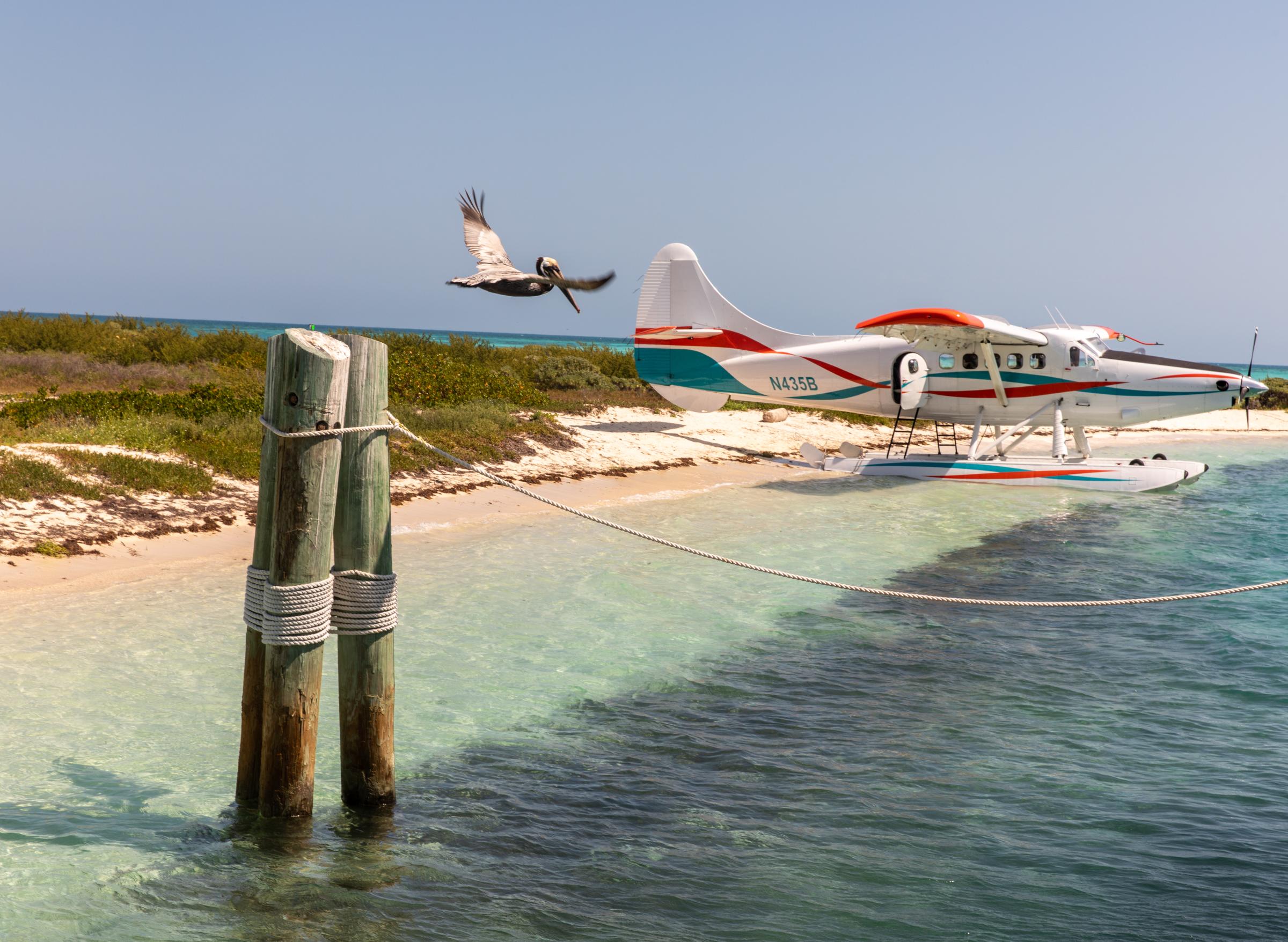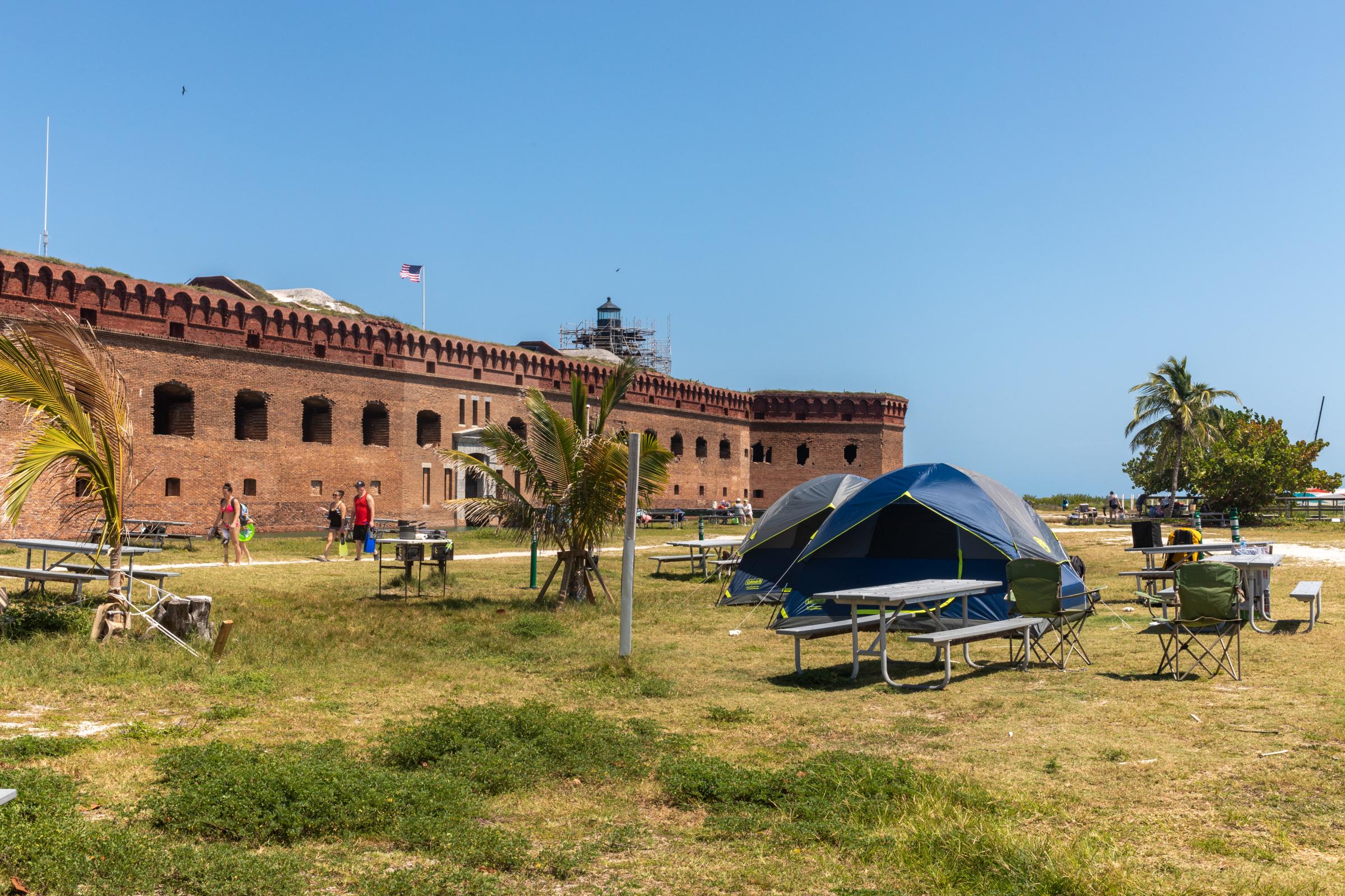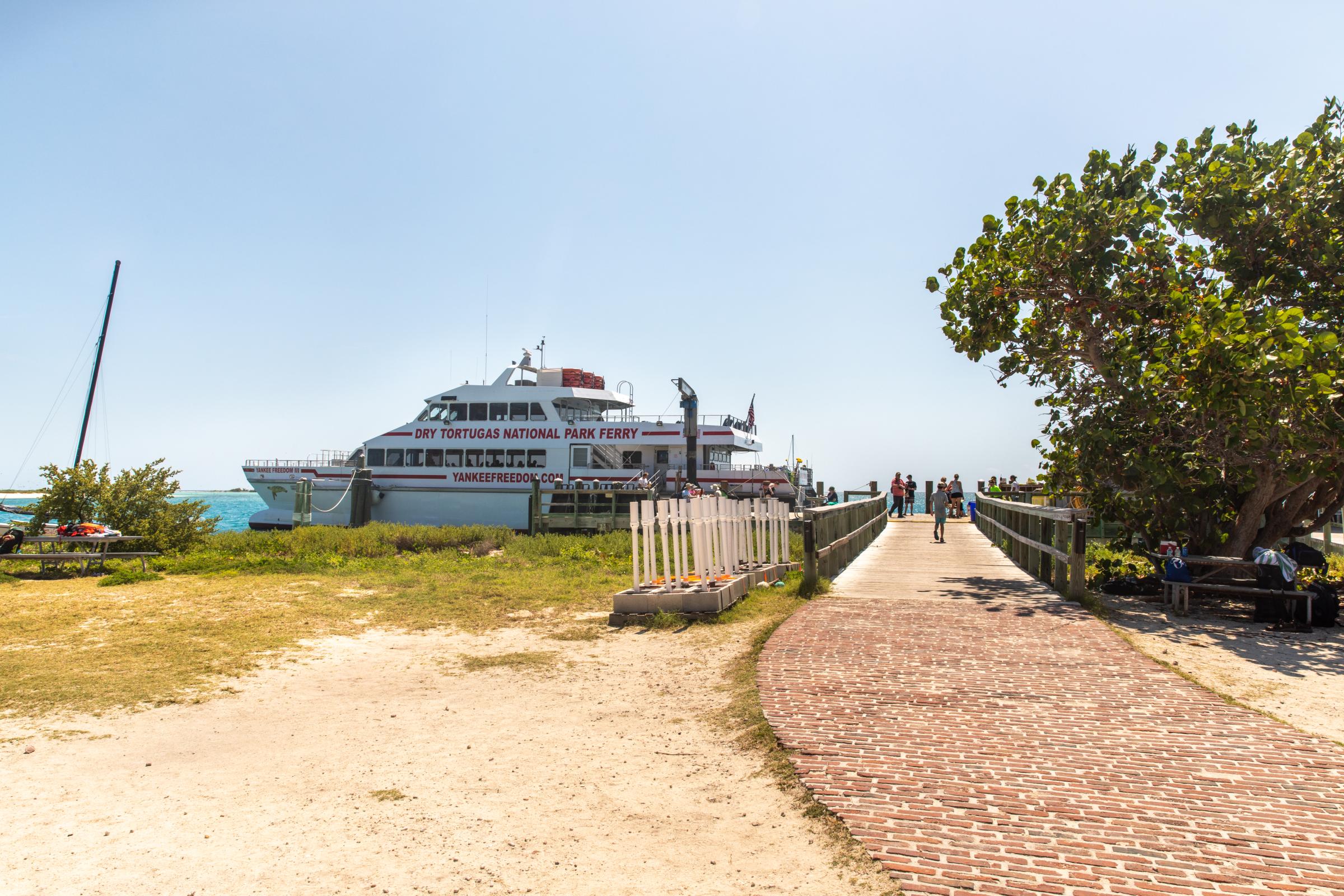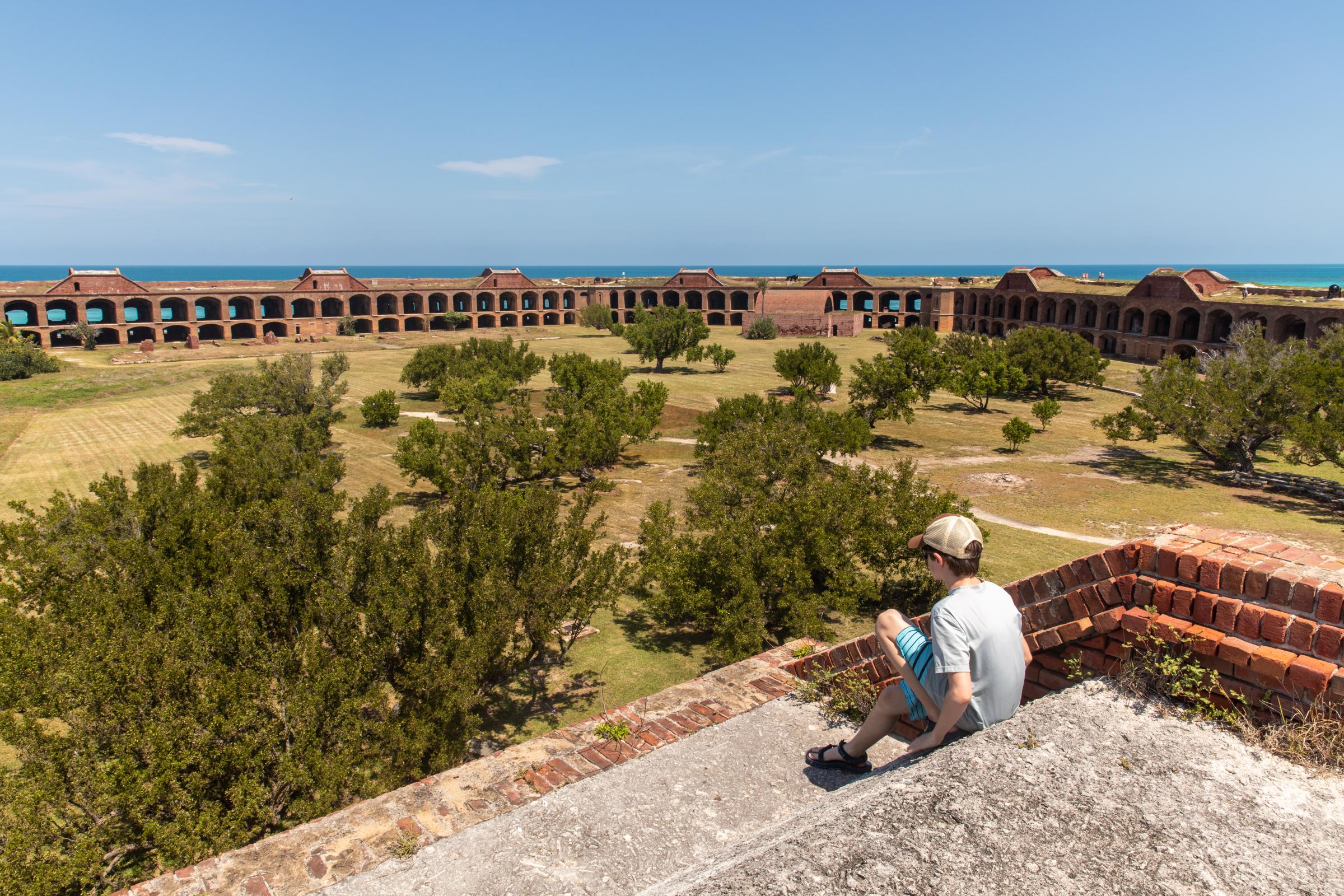Visitors can travel to Dry Tortugas on the Yankee Freedom catamaran or by seaplane. Reservations are required. The ferry ride includes breakfast and a box lunch with other snacks available for purchase. Once on the island, tourists can use snorkeling equipment to explore the shallow waters considered some of the best snorkeling spots in North America.
Camping is available on the island with only 10 campers allowed per day. Considered "primitive camping," campers must bring everything including their own drinking water. Camping reservations fill up fast and are often booked 9 to 12 months out.
Visitors can walk around, through, and on top of Fort Jefferson which was designated a national monument by President Franklin D. Roosevelt in 1935. Construction on the fort started in 1847 with half the work completed by 1860. Originally built as a fortress during the Civil War, the fort later became a prison until it was abandoned in 1874. One of the more famous prisoners was Dr. Samuel Mudd who treated John Wilkes Booth during Lincoln's assassination.

